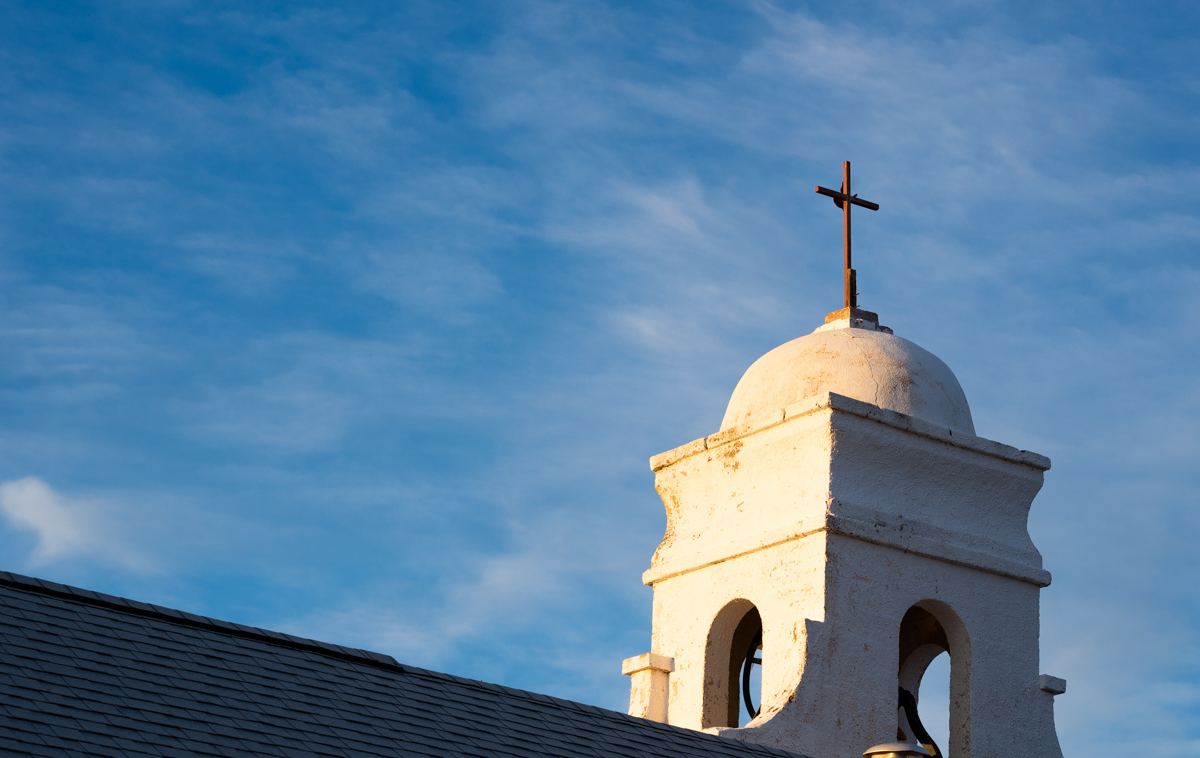At San Solano Missions, friars honor life with the Tohono O'odham
Date Published: February 06, 2024
By Eli Pacheco
In the heat of southern Arizona’s Sonoran Desert, an hour’s drive west of Tucson and 20 miles north of the U.S.-Mexico border, you will find historic San Solano Missions.
Three friars – Brs. Bradley Tuel, OFM, and Peter Boegel, OFM, of the Province of Our Lady of Guadalupe and Br. John Gibbons, OFM, of St. Barbara Province – serve together on the Tohono O’odham Reservation, the latest contingent in a 100-year history of mutual respect and cooperation of the faithful from distinct cultures.
“There is something so stirring and peaceful about the desert here in Arizona, but it speaks to my heart and makes me believe that God is with us here,” Br. Bradley said. “It is where I need to be.”

The Franciscans established San Solano Missions more than 100 years ago and continue to serve the people of the Tohono O'odham Nation today. (Photo courtesy of Br. Bradley Tuel, OFM)
Bringing healing and advocacy to local communities
Tohono O’odham Reservation is made up of four lands totaling 2.8 million acres (about the area of Connecticut), across desert roads and 1 and a half hours from the nearest city.
There is only one pastor for the nation’s second-largest indigenous landholding. Parish ministry is only a fraction of the friars’ work.
“People here continue to be marginalized, so we try to bring healing and advocacy,” Br. John said. “St. Francis often went to places in the wilderness. This is such a place.”
The Rosary is a cherished devotion in the Tohono O’odham Nation. Introduced to Catholicism in the 17th century, indigenous people did not have priests to support their worship for decades after, so they created their “own way of being Catholic” according to Br. John.
They sing Christian and traditional songs. The number four is sacred (much like three is for Catholicism, with the Trinity.) It represents the four directions and four elements.
The number comes up in many traditions, the most distinctive of which is the funeral.

Three friars serve the Tohono O'odham Nation, the second-largest indigenous landholding in the United States. (Photo courtesy of Br. Bradley Tuel, OFM)
‘These are people of fiesta’
The people of Tohono O’odham Nation do not fear death. Funerals last 24 hours, with four days of remembrance. They celebrate the fourth anniversary of one’s death, and Mass is one of a dozen parts of the ceremony.
There are rituals connected with the customary Catholic burial. Mesquite logs, Saguaro ribs, and greasewood branches are placed on top of the casket to build a house for the person’s body. They believe their spirit flies off to God. The family can also bury a blanket, food for the journey, and the person’s favorite items with them.
“They’re comfortable with death, and I have become so, too,” Br. John said. “Funerals are one of the places I have connections. These are people of fiesta. These are opportunities for me to meet people and stay as long as I can.”
Friars who serve there take a piece of the reservation life with them.
“It slowed me down,” Br. Bill said. “Most of us are used to city life, but that is not the norm. That setting is created and can feel out of control. If you serve there, you will find the pace of life is dictated by the people, the earth, seasons, and nature. You can feel a deeper connection with God.”

The beautiful scenery naturally draws the heart closer to God. (Photo courtesy of Br. Bradley Tuel, OFM)
Opportunities at San Solano Missions
November provides a respite from sweltering Arizona summers and chilly winters. Awe-inspiring sunrises make way for crystal blue skies – followed by incredible sunsets and a night display of stars to inspire wonder in God’s creation.
More than the intrinsic beauty, there is a need for friars to serve on these desert lands. There are 55 villages on the reservation and the friars can visit only 15 regularly.
“It’s simple living in a good community, with natural beauty,” said Br. John, who can see Baboquivari Peak, the most sacred place of the Tohono O’odham people, as he hangs his laundry to dry. “It’s not on your typical travel route, but it’s a great place to be.”
It has been that way since Br. Bill served – and the need for more hands continues to grow.
“I’ve been saying this for some time, but it’s like a voice crying out in the wildness,” he said. “For those friars who are discerning, finding their way, this is a viable ministry.”

